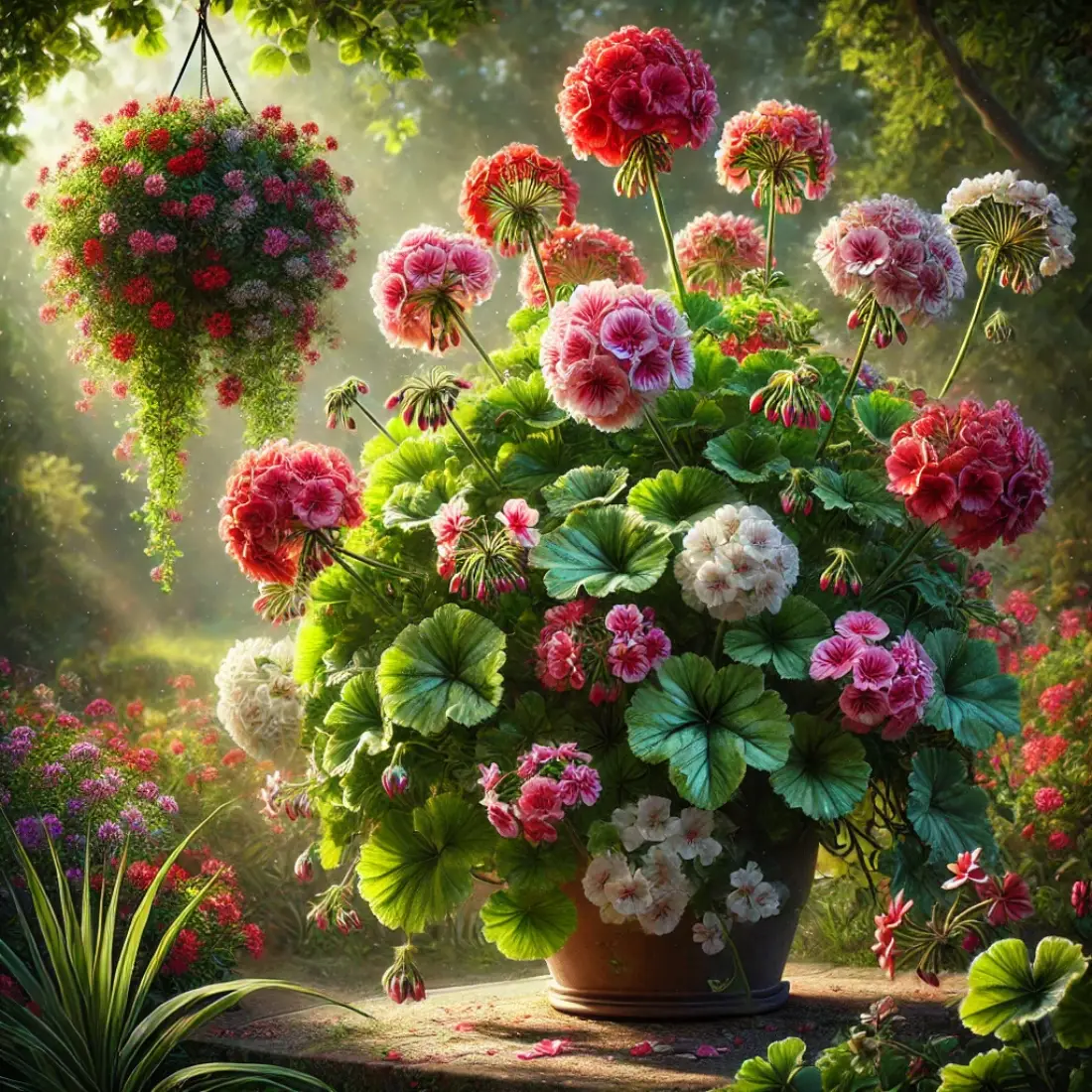Pelargonium are beloved for their vibrant blooms and aromatic foliage. Native to South Africa, these versatile plants have found a home in gardens worldwide, offering a delightful mix of color and scent.
They are known for their resilience and adaptability, thriving in a variety of climates and settings, from hanging baskets to garden beds.Their easy-care nature makes them perfect for beginners.
- Pelargoniums are resilient, easy-to-grow, and suitable for both beginners and experienced gardeners.
- These plants thrive in sunny locations with well-drained soil, making them ideal for a variety of settings, including garden beds and containers.
- Regular watering is crucial, but avoid overwatering, as Pelargonium prefer slightly dry conditions.
- Fertilize every few weeks during the growing season to encourage vibrant blooms and healthy foliage.
- Pruning and deadheading are essential for maintaining plant health and promoting continuous flowering.
- Pelargonium can be propagated easily through cuttings, allowing you to expand your garden or share with friends.
- Protect these plants from frost and extreme cold by bringing them indoors or providing adequate winter protection.
The Different Varieties of Pelargonium
Pelargonium plants are a diverse group, often confused with true geraniums, but they offer a wide range of varieties that cater to different gardening needs and preferences. Understanding these varieties will help you choose the best Pelargonium for your garden.
1. Zonal Pelargoniums

Zonal Pelargoniums are the most common and recognizable variety. They are named for the distinct “zones” or bands of color on their leaves, which create a striking contrast with their vibrant flowers. These plants are incredibly versatile and can thrive in both garden beds and containers. Zonal Pelargoniums are known for their long-lasting blooms, which come in a wide array of colors, from bright reds and pinks to soft pastels.
2. Regal Pelargoniums
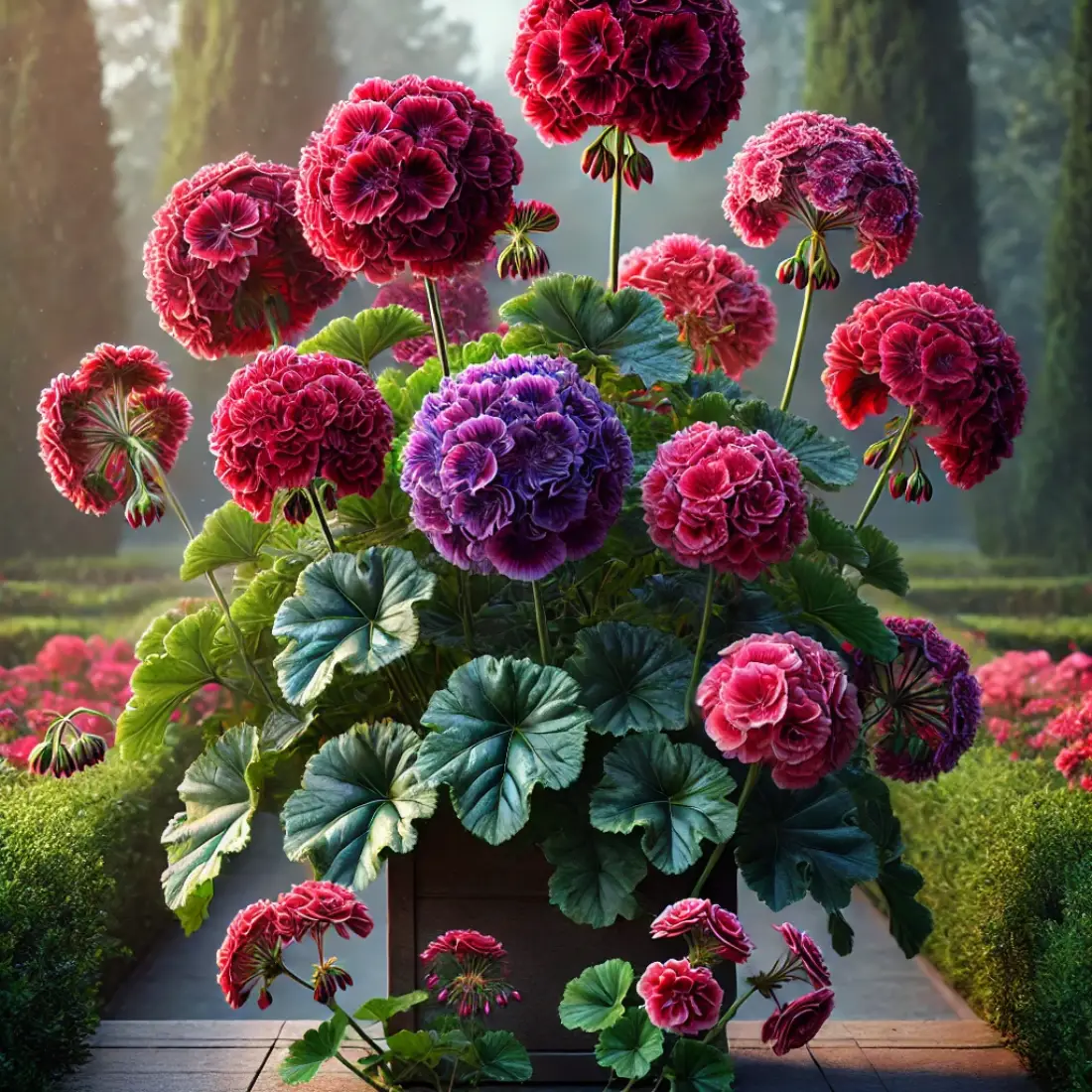
Also known as Martha Washington Geraniums, Regal Pelargoniums are admired for their large, ruffled blooms and deep, rich colors. These plants have a more upright growth habit and are perfect for adding a touch of elegance to any garden. While they require slightly more care, especially in terms of watering and temperature regulation, their stunning flowers make them well worth the effort.
3. Ivy-Leaved Pelargoniums
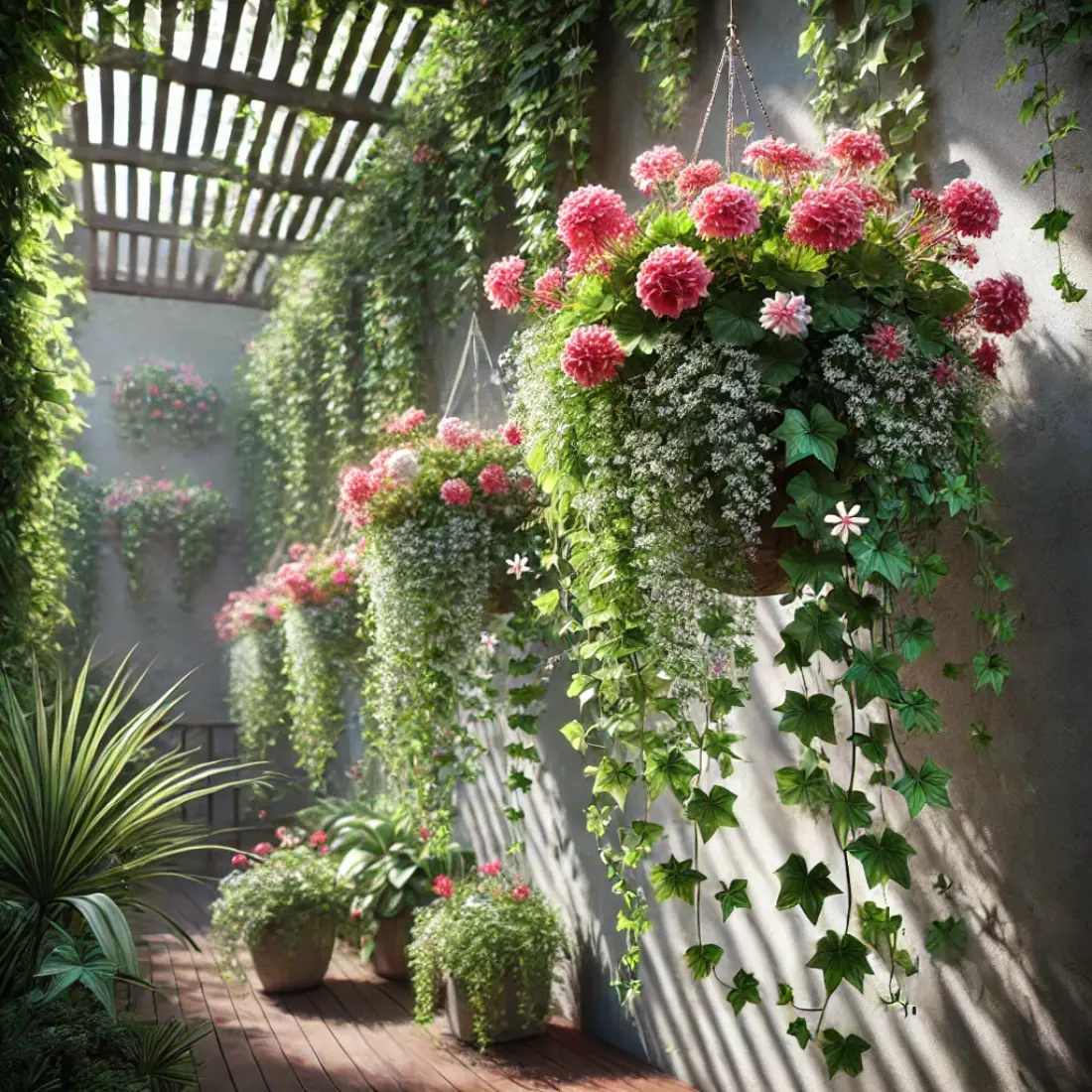
As the name suggests, Ivy-Leaved Pelargoniums have a trailing growth habit and ivy-like leaves, making them ideal for hanging baskets and window boxes. They produce delicate, star-shaped flowers that can cover the plant in a cascade of color. These plants are more tolerant of partial shade and are perfect for adding visual interest to vertical spaces in your garden.
4. Scented-Leaved Pelargoniums
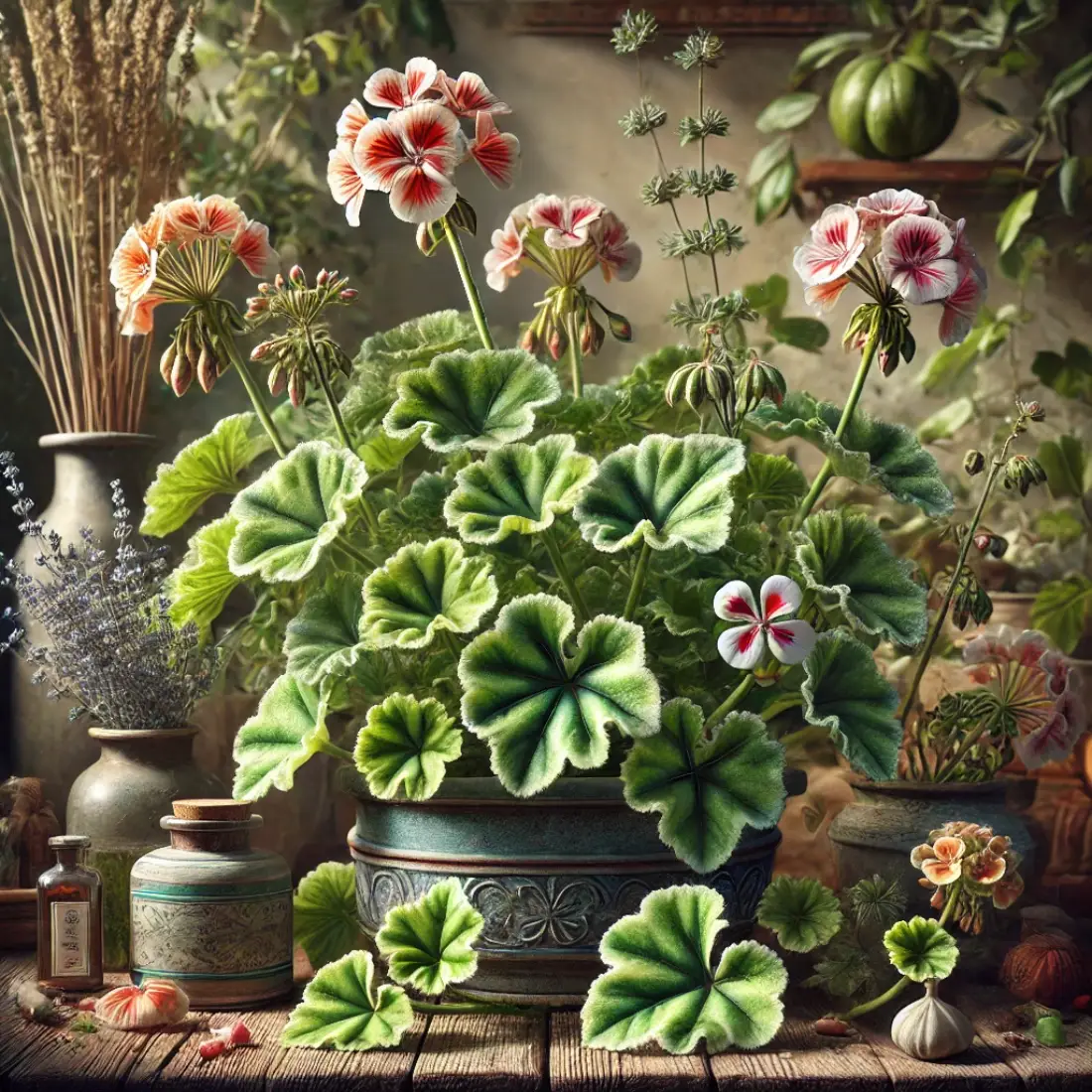
Scented-Leaved Pelargoniums are cherished not only for their attractive foliage and flowers but also for the delightful scents their leaves produce. These scents can range from lemon and rose to mint and even chocolate. While their blooms are typically smaller and less showy, the aromatic foliage makes them a favorite for herb gardens, potpourri, and essential oil production.
5. Angel Pelargoniums

Angel Pelargoniums are compact, bushy plants that are often used as edging plants or in containers. They have small, pansy-like flowers and are known for their prolific blooming throughout the growing season. These plants are a cross between Regal and Ivy-Leaved Pelargoniums, combining the best features of both parents.
6. Unique Pelargoniums
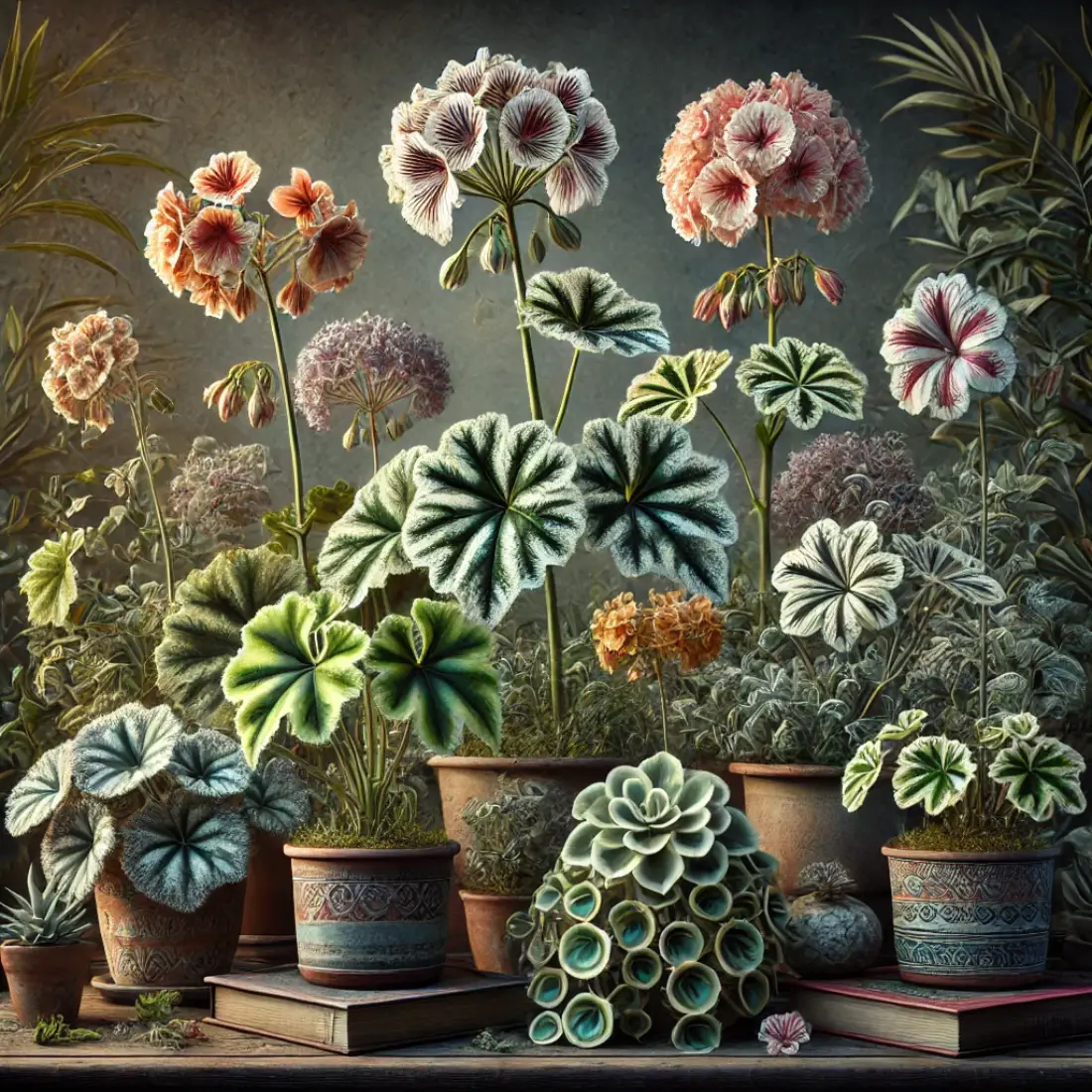
These are less common but highly valued for their distinctive foliage and flower forms. Unique Pelargoniums are often hybrids that don’t fit neatly into the other categories. They might have variegated leaves, unusual flower shapes, or unique growth habits. These are perfect for collectors or gardeners looking to add something different to their plant collection.
Choosing the Right Variety
When selecting a Pelargonium variety, consider your garden’s specific conditions, such as sunlight, space, and desired aesthetic. Zonal and Regal Pelargoniums are great for bold color displays, while Ivy-Leaved and Scented-Leaved varieties offer unique foliage and scents that can enhance the sensory experience of your garden.
Optimal Growing Conditions for Pelargonium
Pelargonium plants are known for their adaptability, but to achieve the best growth and most vibrant blooms, it’s essential to provide them with the ideal growing conditions. Below are the key factors that contribute to the optimal cultivation of Pelargonium.
Climate
Pelargonium plants thrive in warm, temperate climates. They are best suited for USDA hardiness zones 9-12, where they can be grown as perennials. In cooler climates, they are often grown as annuals or brought indoors during the winter months. They prefer a warm environment but can tolerate short periods of cooler temperatures, although they are not frost-resistant.
Sunlight Requirements
Pelargonium plants require plenty of sunlight to flourish. They thrive in full sun, which means they should receive at least 6-8 hours of direct sunlight each day. In regions with intense, hot sunlight, they can benefit from some afternoon shade to prevent leaf scorch. For indoor cultivation, place them in a south-facing window where they can soak up maximum light.
Soil Preparation
The right soil is crucial for Pelargonium growth. They prefer well-draining, slightly acidic to neutral soil with a pH range of 6.0 to 7.0. A sandy or loamy soil mix is ideal, as it provides the necessary drainage while retaining enough moisture to support healthy root development. If planting in containers, use a high-quality potting mix formulated for flowering plants, and consider adding perlite or sand to improve drainage.
Watering Needs
Pelargonium plants prefer to be kept on the drier side, as they are susceptible to root rot if overwatered. Water the plants thoroughly, allowing the soil to dry out slightly between waterings. During the growing season (spring and summer), water them regularly, but reduce the frequency during the fall and winter when the plants are less active. It’s important to avoid getting the leaves wet during watering to prevent fungal diseases.
Humidity and Air Circulation
Pelargonium plants do well in moderate humidity levels, but they don’t require high humidity to thrive. In fact, too much humidity can lead to fungal issues. Ensure good air circulation around the plants, especially if they are grown indoors, to reduce the risk of disease. Avoid overcrowding plants to maintain proper airflow.
Temperature Range
The optimal temperature range for Pelargonium plants is between 65-75°F (18-24°C) during the day and slightly cooler at night. They can tolerate higher temperatures, but in extreme heat, they may need additional water and partial shade. Protect them from temperatures below 50°F (10°C), as prolonged exposure to cold can damage the plants.
Organic Fertilization for Pelargonium
For healthy and vibrant Pelargonium plants, organic fertilization is a great choice. Use compost or well-rotted manure to enrich the soil with essential nutrients. Apply a layer of compost around the base of the plants in early spring to boost growth.
Liquid seaweed or fish emulsion can also be used as a foliar spray or soil drench every 4-6 weeks during the growing season. These organic options provide a balanced nutrient supply, enhancing soil health and promoting strong root development, without the risk of chemical buildup.
FAQs About Growing Pelargonium
How often should I water my Pelargonium?
Pelargonium prefers to be watered thoroughly but infrequently. Allow the soil to dry out between waterings to prevent root rot. Typically, watering once a week is sufficient, but this can vary depending on the climate and soil conditions.
Can Pelargonium be grown indoors?
Yes, Pelargonium can be grown indoors, provided they receive plenty of sunlight. Place them in a south-facing window where they can get at least 6 hours of direct sunlight daily. Ensure good air circulation to prevent fungal issues.
What is the best fertilizer for Pelargonium?
A balanced, water-soluble fertilizer with an N-P-K ratio of 10-10-10 or 20-20-20 is ideal. For organic options, compost, liquid seaweed, or fish emulsion work well. Fertilize every 4-6 weeks during the growing season.
How do I protect my Pelargonium from frost?
Pelargonium plants are not frost-tolerant. If frost is expected, bring container-grown plants indoors or cover garden plants with frost cloths or blankets overnight. Mulching can also help insulate the roots.
Why is my Pelargonium not blooming?
Lack of blooms may be due to insufficient sunlight, over-fertilization with nitrogen, or improper pruning. Ensure the plant receives full sun and avoid excessive feeding, which can lead to lush foliage but few flowers.
Can I propagate Pelargonium from cuttings?
Yes, Pelargonium is easily propagated from stem cuttings. Take cuttings in late spring or early summer, remove the lower leaves, and plant them in well-draining soil. Keep the soil slightly moist until roots develop.
What are common pests that affect Pelargonium?
Common pests include aphids, whiteflies, and spider mites. Regularly inspect your plants and treat infestations with insecticidal soap or neem oil. Good air circulation and cleanliness can help prevent pest problems.
How do I prune my Pelargonium?
Prune Pelargonium by cutting back leggy or overgrown stems, especially in early spring. Regularly deadhead spent flowers to encourage continuous blooming and remove any dead or damaged leaves.
Can Pelargonium survive winter outdoors?
In mild climates, Pelargonium can survive winter outdoors with proper protection, such as mulching and frost cloths. In colder regions, it’s best to bring the plants indoors or treat them as annuals.
How can I improve the scent of my Scented-Leaved Pelargonium?
The scent of Scented-Leaved Pelargonium is most pronounced in warm weather and when the leaves are lightly crushed. Ensure they are grown in full sun and avoid overwatering to enhance the intensity of their fragrance.

